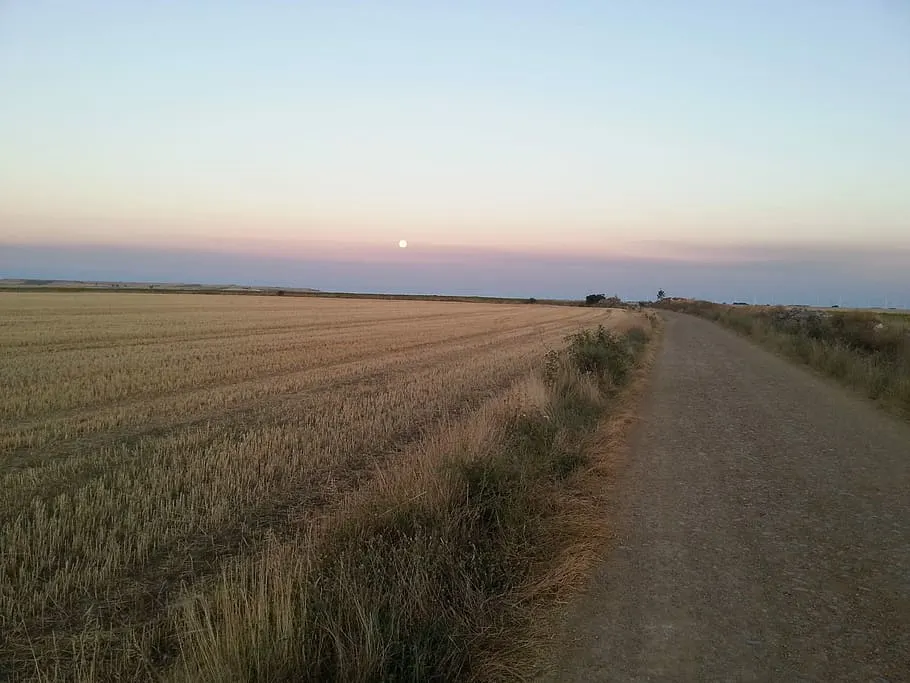
Hiking the Camino de Santiago is a popular activity for pilgrims all around the world. Each year, more than 350,000 walkers, of all experience levels, embark on the Camino, making it a highly desired experience.
El Camino de Santiago, which translates to The Way of Saint James, covers a network of pilgrimage routes ranging from 120 to over 1,000 kilometers. Eventually, all routes lead to the Santiago De Compostela Cathedral in Galicia, Spain.
History Of The Camino De Santiago
The Camino de Santiago is one of the oldest pilgrimage routes in Europe and has seen millions of pilgrims trekking its routes over centuries. As previously mentioned, all routes end at the cathedral of Santiago where the body of the apostle Saint James is buried.
Apostle St. James, also called St. James the Great, is known as one of the 12 apostles of Jesus. In fact, he and his younger sibling St. John were among Jesus’ first four disciples. Together with St. Paul and St. John, St. James was selected by Jesus as one of the only few people to witness his Transfiguration.
During his time as Jesus’ disciple, St. James was credited as one of the people who helped spread Christianity throughout the Iberian Peninsula. It is unclear how his body ended up in the cathedral after his death.
One theory states when he died, the other disciples put his body in a boat, which later landed on the coast of Spain near where the Santiago de Compostela stands today. Another theory claims St. James’ body had been buried and was later found by a Galician farmer near the town of Padron. Eitherway, his body, along with other important relics from his time, was buried in a specially-built chapel now known as the Santiago de Compostela.
The trail itself has been a pilgrimage route for more than 1,000 years. Evidence also showed it was used as a Roman trade route before Christianity spread across the region. The trail, however, grew in popularity in the Middle Ages and saw about 250,000 people visiting every year.
That being said, at the time, knowledge of the route was not as widespread. Pilgrims coming to the route were likely led there by word of mouth. The modern-day Camino was created in the 1980s after Father Elías Valiña Sampedro marked the route with yellow arrows.
Popular Camino Routes
The Camino de Santiago is not just one route but a network of seven main routes. Each route has its own pros and cons based on various criteria, including ease of access, weather, and landscape.
It can be overwhelming to plan out your trip, especially if you’ve never traveled to El Camino de Santiago. Here are some of the most popular paths to help you get started.
Camino Del Norte
The Camino del Norte, or the Northern Way, is one of the most scenic routes to the Santiago Cathedral. Also referred to as the Ruta de la Costa, the path takes pilgrims along the beautiful Spanish coast of the Basque and Asturias regions.
Compared to other routes, the coastal route is not as hot because it runs along the coast. However, some parts can become hilly, which may be a challenge for less experienced trekkers.
The coastal Camino route begins in Irun and crosses along the northern Spanish coast until it reaches the city of San Sebastian, widely known for its Michelin-starred restaurants and natural harbor. From there, pilgrims will make their way toward the second major stop: Bilbao, known for the Guggenheim Museum.
After Bilbao, pilgrims must cross forest tracks, medieval towns, and coastal villages until they get to Santander in the Cantabria region. The route then passes through estuaries, meadows, and monasteries and ends at Oviedo in the Asturias. This is the last stop on Camino Del Norte as it connects to the last leg of the Camino Primitivo route.
Camino Primitivo
Also known as the Original Way, the Camino Primitivo is one of the more challenging routes to the Santiago cathedral. Believed to be the first pilgrimage route, the Original Way starts off in the town of Oviedo and travels towards the southwest into Galicia near River Navia, the city of Lugo, and ends at Santiago.
While it is one of the most popular routes, the Camino Primitivo offers fewer amenities along the way. The route is more favored by experienced trekkers and those looking for a fitness challenge as it has many steep ascents, woodlands, and farmlands.
The last section of Camino Primitivo meets the route of Camino Frances in Melide. Both routes follow the same path for the last 50 kilometers to the cathedral.
Camino Frances
Camino Frances, or the French Way, is by far the most popular Camino route. As its name suggests, the route begins in France, specifically in Saint-Jean-Pied-de-Port. Many pilgrims choose the Camino Frances route. In fact, it is believed that over 60% of modern Camino travelers use this route to Santiago.
The French Way is not an easy walk by any means as it traverses both flat and mountainous terrains. However, it’s not as challenging as other Camino routes. Many pilgrims choose the French Way primarily due to the spectacular sights along the route, including the cities of Pamplona, Leon, and Burgos. The route also passes by some important pilgrimage towns such as Logrono, Ponferrada, and Sarria.
Camino Portugues
The Camino Portugues, or the Portuguese Way, is the second most popular Camino route. The route goes through fantastic cities, including Lisbon, Porto, and Pontevedra. It also passes through the Catholic pilgrimage site of Fatima.
Despite being a popular route, less than half of pilgrims who travel on Camino Frances trek Camino Portuguese. As such, it’s perfect for pilgrims looking for lots of amenities and services during the trip but also a chance to experience the journey to Santiago without the noise of the crowd.
Camino Portugues Coastal
The coastal Portuguese Camino route is an alternative route to the original Camino Portugues. This one takes you close to the Atlantic Coast, allowing pilgrims to amble along a number of seaside boardwalks and estuaries.
The coastal route takes pilgrims to the old tourist town of Baiona, the port town of Vigo, and the magnificent Galician capital of Pontevedra. The last leg cuts through woodlands and hamlets until it ends at the Santiago de Compostela.
Compared to the original Portuguese route, the coastal version is flatter, making it the better choice for beginner trekkers. Although, if you’re a more experienced trekker, the choice will ultimately come down to whether you prefer sea views or cutting through forests.
What Happens After You Reach The End of Camino de Santiago?
As previously stated, all routes end at the Santiago de Compostela Cathedral. Once there, pilgrims can go to the Pilgrim’s Reception Office to obtain a Compostela certificate (Certificate of Accomplishment) when they meet one of the three parameters:
- Traveled at least 62 miles by foot
- Traveled at least 62 miles by horseback
- Biked at least 124 miles
In addition to the parameters, pilgrims must also collect a minimum of two certification stamps while traversing the Camino de Santiago. The stamps, which will be placed in an accredited passport, will serve as proof of their passage.





